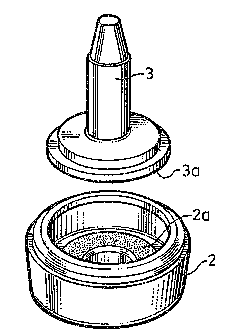Some of the information on this Web page has been provided by external sources. The Government of Canada is not responsible for the accuracy, reliability or currency of the information supplied by external sources. Users wishing to rely upon this information should consult directly with the source of the information. Content provided by external sources is not subject to official languages, privacy and accessibility requirements.
Any discrepancies in the text and image of the Claims and Abstract are due to differing posting times. Text of the Claims and Abstract are posted:
| (12) Patent: | (11) CA 2115149 |
|---|---|
| (54) English Title: | A THROUGHFLOW VALVE AND A METAL MOULD TOOL FOR MANUFACTURING A VALVE SEAT OR A VALVE BODY |
| (54) French Title: | ROBINET A PASSAGE DIRECT ET MOULE METALLIQUE SERVANT A FABRIQUER UN SIEGE OU UN CORPS DE ROBINET |
| Status: | Term Expired - Post Grant Beyond Limit |
| (51) International Patent Classification (IPC): |
|
|---|---|
| (72) Inventors : |
|
| (73) Owners : |
|
| (71) Applicants : |
|
| (74) Agent: | KIRBY EADES GALE BAKER |
| (74) Associate agent: | |
| (45) Issued: | 2002-06-25 |
| (86) PCT Filing Date: | 1992-08-20 |
| (87) Open to Public Inspection: | 1993-03-04 |
| Examination requested: | 1999-06-28 |
| Availability of licence: | N/A |
| Dedicated to the Public: | N/A |
| (25) Language of filing: | English |
| Patent Cooperation Treaty (PCT): | Yes |
|---|---|
| (86) PCT Filing Number: | PCT/SE1992/000565 |
| (87) International Publication Number: | SE1992000565 |
| (85) National Entry: | 1994-02-07 |
| (30) Application Priority Data: | ||||||
|---|---|---|---|---|---|---|
|
A throughflow valve (1) comprising a valve seat (2) and a
valve body (3) is intended to permit a given flow of fluid to pass
therethrough when the valve is closed. To this end, the mutually
abutting surfaces (2a; 3a) of the valve seat and/or the valve body
are irregular or roughened, these irregularities having a size of
20-100 µm. The invention also relates to a mould tool provided
with corresponding irregular or roughened surface created by a
so-called sparking operation.
Note: Claims are shown in the official language in which they were submitted.
Note: Descriptions are shown in the official language in which they were submitted.

2024-08-01:As part of the Next Generation Patents (NGP) transition, the Canadian Patents Database (CPD) now contains a more detailed Event History, which replicates the Event Log of our new back-office solution.
Please note that "Inactive:" events refers to events no longer in use in our new back-office solution.
For a clearer understanding of the status of the application/patent presented on this page, the site Disclaimer , as well as the definitions for Patent , Event History , Maintenance Fee and Payment History should be consulted.
| Description | Date |
|---|---|
| Inactive: Expired (new Act pat) | 2012-08-20 |
| Inactive: IPC from MCD | 2006-03-11 |
| Inactive: IPC from MCD | 2006-03-11 |
| Grant by Issuance | 2002-06-25 |
| Inactive: Cover page published | 2002-06-24 |
| Inactive: Final fee received | 2002-04-09 |
| Pre-grant | 2002-04-09 |
| Notice of Allowance is Issued | 2001-11-01 |
| Notice of Allowance is Issued | 2001-11-01 |
| 4 | 2001-11-01 |
| Letter Sent | 2001-11-01 |
| Inactive: Approved for allowance (AFA) | 2001-10-23 |
| Amendment Received - Voluntary Amendment | 2001-09-18 |
| Inactive: S.30(2) Rules - Examiner requisition | 2001-03-22 |
| Amendment Received - Voluntary Amendment | 2000-01-25 |
| Inactive: Application prosecuted on TS as of Log entry date | 1999-07-13 |
| Letter Sent | 1999-07-13 |
| Inactive: Status info is complete as of Log entry date | 1999-07-13 |
| All Requirements for Examination Determined Compliant | 1999-06-28 |
| Request for Examination Requirements Determined Compliant | 1999-06-28 |
| Application Published (Open to Public Inspection) | 1993-03-04 |
There is no abandonment history.
The last payment was received on 2001-07-20
Note : If the full payment has not been received on or before the date indicated, a further fee may be required which may be one of the following
Patent fees are adjusted on the 1st of January every year. The amounts above are the current amounts if received by December 31 of the current year.
Please refer to the CIPO
Patent Fees
web page to see all current fee amounts.
Note: Records showing the ownership history in alphabetical order.
| Current Owners on Record |
|---|
| FM MATTSSON AB |
| Past Owners on Record |
|---|
| SVEN ANDERSSON |